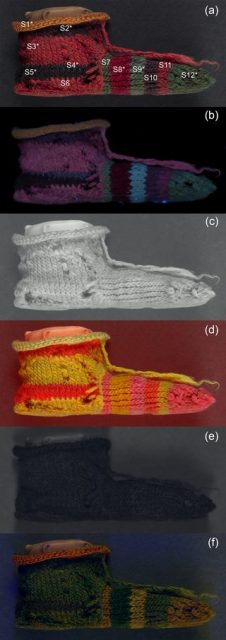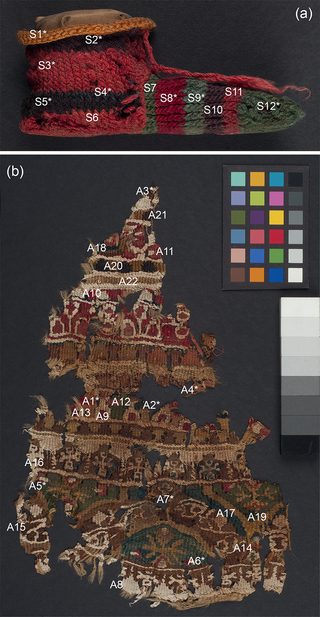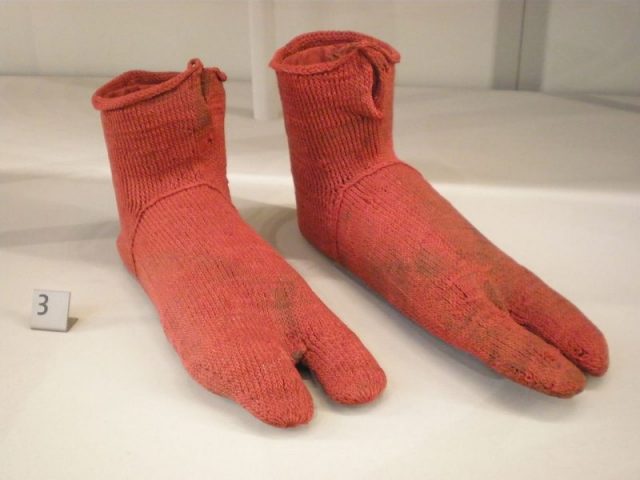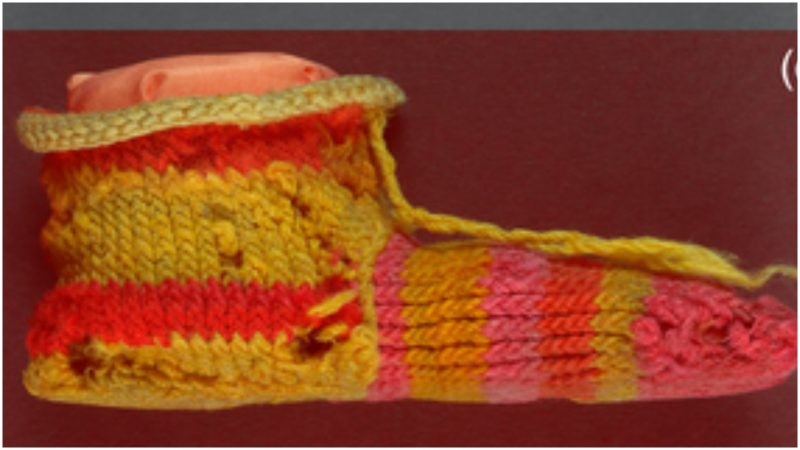One person’s trash is another person’s archaeological treasure. That’s long been the case, but it’s taken in a new direction by the recent analysis of an Egyptian stripy sock that was found in what was at the time a rubbish dump in Antinooupolis in Roman-era Egypt.
British Museum scientists developed a special imaging to help them discover how Egyptians used dyes on a child’s sock, radiocarbon dated to about 300 A.D. Not wanting to destroy the sock with invasive scanning, they “utilized multispectral imaging, which only needs to scan the surface of artifacts to test for pigments.”
The researchers believe the sock was made for the left foot of a child, showing separation between the big toe and four other toes. It used different colors of wool yarn.

Many Egyptian socks found have a similar style: made of wool, bright color, with a section between the first two digits in order to wear with sandals.
According to the Smithsonian, the sock was “Fished out of a landfill during the 1913-1914 excavation of the Egyptian city of Antinooupolis led by English papyrologist John de Monins Johnson on behalf the Egypt Exploration Fund.”
No one analyzed the sock until recently.
Socks have existed since the Stone Age, but the ancient Egyptians are thought to be responsible for the first knitted socks.

The recovered child’s sock was described in the journal PLOS One: “Each toe is made separately from dark green wool (10 rows). The two toes are then joined and worked in bands of the following colours: orange (4 rows), purple (4 rows), bluish-green (4 rows), dark red (6 rows), green (2 rows).”
“A welt across the instep marks where the loops are worked in the round. The top edge is continuous and curls over; a loose thread of red wool forms part of a tie or tassel at the center front.”
The sock was one of four ancient textiles examined, each selected from the British Museum “for their historical/archaeological importance.” Besides the stripy sock were fragments of textiles from Wadi Sarga. These objects are all held at the museum’s Department of Ancient Egypt and Sudan.

Dr. Joanne Dyer, a scientist in the museum’s department of scientific research who developed the approach, told The Guardian: “It was exciting to find that the different coloured stripes found on the child’s sock were created using a combination of just three natural dyes.”
The imaging process is a cheaper, less time-consuming, and less destructive way of studying ancient textiles, she explained in the interview. “Previously, you would have to take a small piece of the material, from different areas.
And this sock is from 300 AD. It’s tiny, it’s fragile, and you would have to physically destroy part of this object. Whereas with both the [multispectral] imaging, and other techniques, you have a very good preliminary indication of what these could be.”

The 3rd century AD was a time of tumultuous change in Egypt. Roman influence had peaked.
Ongoing economic change was seen in the growth of agriculture and the increasing concentration of wealth and culture in cities, not only Alexandria but also Antinoopolis in the Nile valley.
Christianity was spreading, in an interesting form. “Christian hermits in the Egyptian desert began a new style of communal living, later known as monasticism,” according to the Met Museum.
Read another story from us: Mt Vesuvius Explosion in 79 AD: Exploding Skulls and Boiling Blood
“The earliest monastic communities are made up of hermits who spend most of their time in solitude. Communities of monks who live and work together are formed early in the 4th century. Pachomius writes the first rules for monastic life in about 321 A.D.”
Whether the first monks wore stripy socks, though, is unrecorded.
